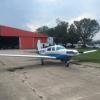Leaderboard
Popular Content
Showing content with the highest reputation on 03/21/2021 in all areas
-
Just a follow up. Pulled the left mag yesterday. A couple teeth missing on the nylon gear. Apparently it continued to spin and provide a spark, but not at the proper time. Engine would backfire every couple seconds when the ignition switch was on both. Hammdo came to the rescue with a serviceable magneto. Just send it back when you're thru with it. Terrific guy, but I think everyone already knew that. Airplane is going to AGL in Morganton in another week. Plan is to install a Surefly SIM on the left side.4 points
-
I disagree. I reviewed every post in this thread, and found no instance where anyone appeared to be advocating for changing the timing arbitrarily, and a perfunctory MS search about "IO 360 mag timing" turned up previous posts from some of these members describing the procedure outlined above. I'm not an A&P, and I've never bothered changing the mag timing on my IO-360, yet I still recall the procedure to do so because it's been discussed ad nauseum on MS by a lot of knowledgeable people who've either had it done or done it themselves as mechanics.3 points
-
After having bought a plane that after setting up an extended period, I think I have an experience on the subject worth sharing here: To the sellers credit, before putting it up for sale, he removed the cylinders and inspected the cam and lifters finding everything apparently fine. He honed the cylinders, replaced the rings and put it in service running very well. I flew the plane regularly saving for a few multi week periods of setting up while working through gear problems. After about 65 hours, metal showed up in the filter. We pulled a cylinder at that point and inspected with mirrors finding only a faint line of very light corrosion on one lobe, but lifters looked good as best we could tell. I ran another 15 hours before doing an oil analysis. It was not good and there was metal in the filter. We pulled all the cylinders at that point and found two adjacent lifters significantly spalled. I won’t go into the rest of the actions taken at that point because they’re not Germaine to the thread subject. What I now believe is that Inspecting Lycoming cam and lifters is a non conclusive process. If there is the tiniest spec of material missing from a lifter face that is undetectable with an inspection. Once there is a tiny crater, it will start to come apart much like a pothole. One tiny piece will come out, then another tiny piece and so forth. After this experience, I believe that the flight history of the plane might be much more important than a cam and lifter inspection. The cam is high and if the engine sets for an extended period, what length of time I’m not sure, without roller followers or DLC lifters can very easily lead to the problem I’m dealing with. It only takes a small area of corrosion on a lifter face for this destructive process to begin. I believe there is no set time limit for it setting up. It’s not simple. The problem is related to time but not indicated purely by the length of idle time. The root of the problem IMHO is CORROSION. Many factors effect the amount of time before an amount of corrosion occurs that is damaging. If it is flown often enough, for periods of time long enough at an oil temp that is hot enough to drive out all the moisture then corrosion probably won’t be a problem. It also has to do with the storage climate, its temperature and humidity. I have not done any research on Camguard. I don’t know it’s claim to fame. I THINK that the idea is that it makes the oil cling to the cam for a longer amount of time. I have heard people rave about it being totally convinced that it will completely eliminate the problem forever. I have heard others claim that it is nothing but snake oil. I have not looked into it so I have yet to form an opinion. I believe that the best preventive option lies with roller lifter or maybe DLC coated lifters. The only real conclusion I have drawn is that setting up can be terribly destructive for a Lycoming.3 points
-
The usual issue is that the hangar is ~$300-$400 and equivalent storage space at a storage facility will be quite a bit higher than that. Sure, $100 for a unit, but that's about 1/10th the space of a hangar. There are a few airports around here that are private or private-ish that rent hangar space, and it's pretty typical that they're full of furniture and cars and other crap. There might be an airplane in there somewhere, but it can't get out. I'm glad for the airports that enforce their hangar rules. Otherwise the waiting lists would be decades long, like they are in a lot of places that don't enforce.3 points
-
Yes, this will only identify lobes & lifters that are already unserviceable. It won't detect corrosion pitting that leads to spalling of the lifter faces. It's already easily done with a dial indicator mounted to the rocker cover bolt holes. You compare the lift of all intakes to each other and all exhausts to each other.3 points
-
I thought about posting this in my previous thread about the Aera 760, but thought in view of today's circumstances it was better to start a new thread. Today was interesting to say the least. As a result of having been completely vaccinated, for the first time in over a year I took on a ferry job that involved flying Commercially to get the airplane. If I hadn't been vaccinated, it would have been a very uncomfortable trip. The Southwest flight was totally packed and when arriving in San Diego the terminal had more people packed in waiting for flights than I have ever seen, even before Covid. (See Photo below. It was actually worse than it looks in the photo) I thought it was going to be an easy flight with no substantial weather. I did a text briefing from Garmin Pilot and scanned METARs and Terminal Forecasts. I should have spent more time and actually gone on a computer to see what was potentially out there a few hours later. When I looked down on the trip from San Jose there really wasn't anything going on. So I filed out of San Diego to Stockton on my usual flight plan; Oceanside to Seal Beach, then up V459 to Lake Hughes, then Visalia to get around the Lemore NAS MOAs, then direct Stockton. Everything was looking good up through LA. At that point I looked ahead, and in the middle of California there was a significant band of weather that had developed just behind a cold front. Tops were 20,000 feet so there couldn't be much convection, but there were a significant number to storm cells that were showing on the G1000, the 760, and the iPad. The band was moving pretty fast, since at 16,000 feet it was a direct crosswind at 40 knots. Just out of the Tehachapis I primed the TKS to make sure it was working. If I had been flying my airplane it would have been land and possibly stay overnight due to reported icing. As I moved closer to the weather I asked for and actually got a block altitude clearance in California. As I asked for higher from my initial cruising altitude of 14,000, the Controller quizzed me as to whether I really meant go lower, since some other aircraft had asked for lower. No, I wanted higher to possibly top it. The band did not extend to Stockton. so I knew I wouldn't be descending into a mess. First I asked for 16,000, then a block 16,000-17,00, then FL180, then FL 190. The temperature went to a -19°C. In the initial climb the windshield started to pick up ice. I turned on the TKS at that point. and it dissipated. At 19,000 feet I was still in cloud but I could see the sun, the conditions were smooth, there was no ice, and no convection. The stormscope showed nothing and the storm cells were moving east past me. ATC gave me a descent, which I declined due to still being around some indicated storm cells. They followed that with a pilot discretion descent. So what does all this have to do with the titled topic? I was monitoring all of this on the iPad and had set up the approach with the RNAV 29 approach plate overplayed on the map in preparation to running the approach. I got a little turbulence on the descent and I look over at the iPad and it had shut down. It had plenty of juice, but wouldn't turn back on, and I was busy being vectored for the descent since I had to stay high for so long. There was no time to trouble shoot it. I quickly set up the 760 for the approach and overlayed the plate on it. I had previously loaded the approach on the G1000, so I was set up for the navigation. When I got home, of course, the iPad turned on. I will never trust the iPad. Thank goodness for the 760, the normalizer once again. I know the plates are on the G1000, but I hadn't flown the G1000 in quite awhile, so hadn't set it up before hand. In my airplane, in which I know the avionics backwards and forwards, I have plates on both the G500 TXi and the GTN 750Xi in addition to the Aera 760 and iPad, so a failure of the iPad with that many backups is a none event. Not so today. The 760 backup came in very handy. Of course if that had failed, then I would have asked for additional vectors, as I set up the plate on the G1000. The moral of this story is you better have a backup to the iPad (preferably two) if you are using it for your primary approach plate and weather, and what better to use than the Aera 760?2 points
-
Interesting. For my early J model, POH 1220G only has temp and pressure for the oil in the limitations section, but section 1 says "6 qts min for flight".2 points
-
Never thought I'd hear myself say this, but your mission doesn't sound like it's suited for an Ovation, nor would I think of "time-building" in one. You'll wind up pouring more money into the ownership experience when you should be focusing on growing your piloting skills by finishing your Private certificate and progressing through your Instrument Rating as soon as possible. Personally, I'd find a really nice rental, or find another lesser-expensive Mooney with which to build your time, and put your remaining budget into some top-quality instruction and time-building. Once you accomplish these goals, and if your mission expands, then look at the Ovation. Steve2 points
-
Well he asked about an Ovation, so fuel burn is pretty close to a -182. Yes, you get farther in the O if you’re traveling, but it’s similar over local flights and training. If you compare to an IO-360 like I have it’s still not much different in the grand scheme... I guess what I meant by similar fuel bill is in the overall ownership of the airplane, the difference won’t be much. I think about 13 gph (C-182) vs 11gph (M20E) is pretty fair rich of peak. Makes it about $9/ hour difference if 100ll is $4.50. So somewhere around $1000 at 100 hours/ year. Ownership Is somewhere between $14-$20k / year, so I figured $1k is lost in the noise... I think your advice about an E is solid. Plenty of airplane for 500nm trips. Maybe a bit tight in the backseat for 3 adults total and possibly UL limited with 3 adults. He needs to narrow his mission a bit. But an E would be good for most of it.2 points
-
I don't have any data on TAS but I doubt it makes a lot of difference. I think it would probably give a slight edge above 10K in level flight. The difference in take off and climb was obvious enough to me that I corrected the mechanic's mistake within 24 hours. However, that does not mean it would look like a lot on paper. It just felt a bit tired...obvious enough for me to put two and two together when I saw the retarded timing in the logs.2 points
-
I installed the Mooney factory kit in my 2000 M20R; pn 940105-503. I think kit price was around $5k. It's basically a B&C 20 amp unit that mounts to the pad adjacent to the vacuum pump - note B&C doesn't have an STC for the install and so I found factory was the only option. Installation was a challenge, not for an A&P who's unsure of electrical systems, some of the supplied parts didn't fit the existing connectors in my sn aircraft even though it was the correct kit. Frank Crawford and the team at the factory provided responsive support and we got it all worked out. Note; there are a couple of different kit part numbers; make sure you get the correct one for your aircraft sn.2 points
-
2 points
-
Sorry Ross, my fault. I;ve got you confirmed. You're late but David is allowing the late additions. You're confirmed Tom. Late, but you're confirmed Mike2 points
-
2 points
-
The CHT and EGT probes are the same part numbers. So if upgrading you can use the existing probes and save yourself some time.2 points
-
Give us a call Monday and ask for Mike or Bill. They will be more than happy to discuss any issues you have with the KX-165. They will be able to provide information on potential repair cost and lead time. 316-946-48702 points
-
Hey..., The weekend is here.... I’m thinking of changing the timing on my engine... Thanks A64, I didn’t know I could skip the rules and make it so easy... Now I see all I have to do is stamp the proper name plates and everything is good... What I have noticed over the years... When people write things... they can be interpreted differently very easily... I have also noticed when you call somebody out for the way they wrote something... you don’t make a lot of friends... If you choose a path that says everyone is wrong... and you know the right way... How did that work for you on the sailing site? Sometimes it is OK to let things go that you don’t understand... Sometimes it is best we work together as a team... I expect that you won’t understand what I am writing here... PP observations only, not everyone here is a scofflaw... Best regards, -a-2 points
-
I replaced all my insulation with the insulation Mooney uses. It's aluminized mylar foam with a self adhesive backing. You can buy it from a Mooney Service Center in bulk. It will be legal because it's a Mooney part and has proper burn certs and it's lighter than some other foams. As to what you need to take apart every annual, the Service and Maintenance Manual coupled with the checklist is your guide. It's good on the first inspection after you buy it to tear things apart to find out what you have, but after that a lot of disassembly is unnecessary and just wears things out. Skip 100_Hour_2018.pdf2 points
-
Your engine would not be running if you were actually flowing that much fuel. Was your transducer recently replaced? The JPI piggybacks off the factory transducer to get it's fuel flow signal but doesn't power it.2 points
-
I have very much been enjoying not talking about or thinking about politics lately. I don't care if I agree or disagree with the op. That's irrelevant. With hiccups sometimes, we have done a pretty good job here remembering its an aviation forum. Although being an aviation forum, certainly talking about the airplanes of presidents and former presidents must be fair game. Though it can easily become fodder to run off the rail again.2 points
-
I have a tendency to agree with the OP, but please let’s not. I’m a moderator on a big sailing forum, I don’t visit there anymore, they let politics in. and it’s ruined the forum2 points
-
I'm guessing 4200 RPM is the unloaded speed of the motor, but I don't think it turns anywhere near that fast under load. Your math is about right except there is no gearing between the emergency crank cable and the motor shaft in the M20F vintage of airplanes. The emergency engage just slides the crank cable spline directly into the motor shaft, it's a 1:1 hookup. The motor shaft is geared to the drive mechanism by a worm gear arrangement, which originally had a 20:1 ratio. J model actuators and "upgraded" early-model actuators have 40:1 gears. We've had both in our airplane, so I'm pretty familiar. Prior to the 40:1 upgrade, gear transit time was about 3 seconds, and emergency extension required about 70 cranks from full up to full down. After installing the 40:1 gears, gear transit time is about 6 seconds and emergency extension requires about 140 cranks from full up to full down. Doing the math for 40:1 gears, 6 seconds is 0.1 minutes to make those 140 turns. That's about 1400 RPM at the motor shaft.2 points
-
Have them remove the tank during prebuy and have it filled. Replace and check function. If you’re getting serious about the plane have it hydro’d to save pulling it again in the next few years.2 points
-
Something like that happened to me 5 or 6 years ago. Was flying a PALS (Patient Airlift Services) mission from Philadelphia to Rockland (Maine). IFR day and at 9000ft we were in and out of the clouds most of the way. It was a busy ATC day and the Bahsten controllers were talking even faster than usual. About 20nm W of Boston while NE bound I get vectored 30dg left, barely on the new heading I get a vector 60dg right....just level again and wondering what was going on and I get a call "...Compassion Flight 6PC traffic 1 o'clock, two ship 747 and an F22...." Nothing to see except ragged clouds so I reply "...negative contact in IMC..." Brief silence then "...Air Force One turn 30dg right..." The 75 yo cancer patient in the right seat and I turned towards each other with big grins....she may not have been a pilot but certainly realized the president just gave way to our lowly Mooney2 points
-
Rigging does nothing for your energy level but camguard is an excellent appetite suppressant. I like a little camguard on a slice of whole wheat toast.2 points
-
BYOB - bring your own banana. I was just remembering - when I was 21 or so - getting in shape meant go on a 2 3 or 4 hour ride every day for 2 or 3 weeks and then good to go I was fast. Today, I need to get into shape first to think about getting into shape. I.e., I can't just get up and go on a 2 hour ride. I need to ease into it. (or I injure something!) Even then I can't beat myself up day after day like I used to. Instead I over train if I try and deep fatigue is the enemy of getting into shape. Old days recovery just meant do it again tomorrow. Today, as you said - rest of the day on the couch.2 points
-
in the spirit of getting over the hump, I'd like one each please. Thanks Mooneyspace! Best, Brad2 points
-
I've attached a link to the pictures of my mounting of the Aera 760 and GDL 52. I didn't want the GDL 52 on the glareshield, so I had Peter Casares, who has done most of the upgrade work on my plane, do the installation. The suction cup mount made specifically for the GDL 5X series is beefy and has remained locked on to the window for the past several months without loss of suction. I keep finding new additions to the 760. The latest is the ability when downloading the active track to download either the entire track (this was the only way in previous handhelds), the past 24 hours, the past 7 days, a selected flight, or specific Dates. The data can then be used in Garmin BaseCamp, Google Earth, or other compatible program to analyze the flight or range of flights.1 point
-
Yes. The heads are aluminum so the helicoil helps keep the plugs from seizing in the head or blowing out.1 point
-
I have mine at 25, that’s what it says on the data plate. I tried it at 20, it didn’t run quite as good.1 point
-
I wish you were here to make friends. It's a pretty friendly and welcoming community most of the time. This thread is my first memorable interaction with you and it's my hope that your online persona is a misfire and not deliberate. I would say you're pedantic (not in short supply around here) but it's not the right word because that word is by definition reserved for people well versed in a subject who are annoying in the delivery of their expertise. You've got the first part down...the second part, not so much. Many of your statements are either untrue or not really pertinent to the discussion. You are lecturing people who clearly have a stronger grasp of the subject matter than do you. It's cringe worthy to read some of things you've written with regard to combustion science. Add to that you acting the part of wise man cautioning members of this forum against doing things that no one has advocated. You don't know what you don't know and it's seems from this thread you have little interested in finding out. Think about the time wasted in writing and deleting a post showcasing what you don't know when you could simply do a little research. It is telling that it never occurred to you that you might not be informed on the subject. I truly hope you stick around. Members define themselves overtime. A misfire here and there does not make a reputation. I speak from experience. BTW, If the Mooney Chronology is to be believed, there were over 2700 four cylinder Mooneys delivered from the factory with 25° timing. There are far more aircraft flying that were delivered that way than have been converted back.1 point
-
I heard that they did this to reduce warranty claims for rear cylinder cooling on Grumman‘s with the 200 hp engine. Lycoming actually does not have a brake dynamometer, they simply look at airflow and fuel flow and say well it’s making rated power...well you know you can run it full rich at 20° or 25° and the fuel flow doesn’t change much but the power at the crank does.1 point
-
The engine is a rebuild from Western Sky. And it was run. Thanks for reminding me because I have the run numbers. It does appear that my gauge is reading about 10 psi high. The consensus was to check the gauge is sound advice.1 point
-
OT warning! Sadly, yellow Cavendish bananas are monoclonal and under threat from disease with some expecting it to be wiped out like the Gros Michel banana 60 years ago. https://time.com/5730790/banana-panama-disease/ Perhaps the bright side to this is that it might produce economic pressure to cultivate some of the other varieties of bananas still remaining (even perhaps the Gros Michel). They're out there still, but they're never sold because they're harder to transport and can't compete with the Cavendish industry, but when I tried a couple local varieties on trips to Central America, damn are they good in comparison! Has anyone actually ever had the Gros Michel? It was supposed to be far superior in taste compared to the Cavendish. OT sidebar over1 point
-
To utilize it properly I would think you’d want to wire in a backup/emergency circuit as the output is much lower than the main alternator. Having said that with two batteries in the back and the massive amount of destruction that can happen to the engine I’d land ASAP vs continuing to the destination.1 point
-
1 point
-
First of all, no need to be square. My M20C would cruise as high as 16,000. MP was down around 18" or so, but prop still running at 2500 where I set it.1 point
-
1 point
-
Technically yes, legally know.... The JPI900 uses different part numbers for the certified primary device... regarding the existing TCs... Kind of an FYI in case you didn’t know... You should be able to verify this pretty easily. PP thoughts only, not a mechanic... Best regards, -a-1 point
-
I'm wondering if there is some difference between the Dukes and ITT actuators here. My understanding is they are of similar design, but 40 cranks in our 1976F would not be anywhere near full transition. We have an ITT actuator. Earlier airplanes had the Dukes actuators. Both actuator types are subject to the AD that requires periodic inspection of the gear train, and I always assumed they were basically the same; but maybe not.1 point
-
CBs are sized to protect WIRING. The tacit assumption is that something must have gone wrong with the LOAD.1 point
-
You get different deposits in your cylinders when running ROP and LOP, When LOP you get a lot of Lead Bromide when ROP you get a lot of carbon. Preignition is often caused by a hot flake of deposit which ignites the fuel charge. I found if you switch it up periodically by doing a few trips ROP, your cylinders stay squeaky clean. ROP will reduce the lead bromide and LOP will oxidize the carbon.1 point
-
I have found three ways for the iPad to fail me: 1. Low on power. Sometimes I forget to charge it. I fixed that by having a permanent USB power source installed. 2. Over temp shutdown. I solved that by not leaving it on the yoke mount in a hot plane parked on the ramp, positioning Rosen sun visors to keep the sun from beating on it in the cockpit, and directing the knee vent toward it on hot days which keeps me cool too. 3. Accidentally swiping the screen and turning the display brightness all the way down in bright sunlight. It gets so dim as to appear totally black. I’m just learning to be more careful with touchscreens. Redundancy is good, but single pilot IFR in terminal areas is a high workload environment and changing workflow on the fly seems unwise unless all the alternate schemes have been well practiced. So, +1 for getting help from ATC. With an Aspen PFD and a GNS 430W all I really need the iPad for is charts. I can get them with Foreflight on my phone in a pinch. But, in reality, I’d just ask the controller for some help. Skip1 point
-
Thank you all for wishing to join in. The order window is now closed. We've reached both goals in regards to pricing. PLEASE PLEASE verify your name is indeed in the list in my first post. If its not there, it doesn't get submitted. I've had people PM, text, call, tag, comment, and email me so trying to keep track was a challenge. Total Uplocks: 42 Total Downlocks: 47 Prices are now as follows: Uplock- $205.36 each Downlock- $223.90 each Shipping- $25 I've asked Skates97 (Richard) to handle the payment system since finances are his life and can do a better job than this cargo pilot so you can expect a PM from myself, him (Skates97) or David (Sabremech) for anything related to this order. Again, the lead time is 6 weeks, I expect we should be have regular updates. Thanks again, all -Alex1 point
-
Sorry for the confusion. I did not mean to imply that changing timing does not affect detonation margin. I only meant that small offsets from MBT timing don't have much effect on torque. Here's a graphic taken from Amann, C.A.: "Cylinder Pressure Measurement and it's Use in Engine Research." SAE paper 852067, 1985.1 point
-
Not me. But coincidental that this pops up. Commercial real estate is my game and I figured T hangars would go along with bare commercial flex space that I've focused on. So I offered to foot the bill for new swanky T hangars at my FBO. There's a personal motivation involved, of course. Dorkface hasn't even responded to the email with that offer. Ugh.1 point
-
The problem I see is that there would be a double compound curve in a single piece....at least for my vintage. It would be very difficult for one person to install where it needs to slide under the cowl. I replaced the center piece that. Anthony mentioned with heavier gauge and no center hole. Added seals on the center piece itself. Also, cleaned the rain channel and new seals. An extended cabin cover also helps a lot.1 point
-
It is easy to pull the interior panels on the sides just in front of the front seats. The inside senders are right there. If they are leaking you should be able to see the blue stain. If you decide to tighten them, don't overdo it. Could be on either side; equally likely.1 point
-
My C model's performance was not very good above 10,000 ft. I took it to 12,500 a few times. Hot or heavy it would be lucky to get 250 FPM climb at that altitude. I would not want to be in the mountains with it on a windy day. E and F models do much better with their fuel injected engines. You also have to watch the engine temps very closely taking off from density altitudes over 8,000 ft. I did that once on a hot day in Sante Fe and had to lower the nose and climb out at about 100 FPM for a while to keep the CHT's out of the red. The thin air really hurts the cooling, and the C model engine runs a little hot all the time.1 point





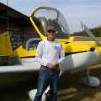
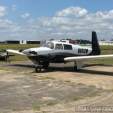


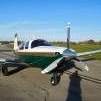


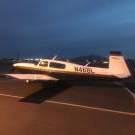
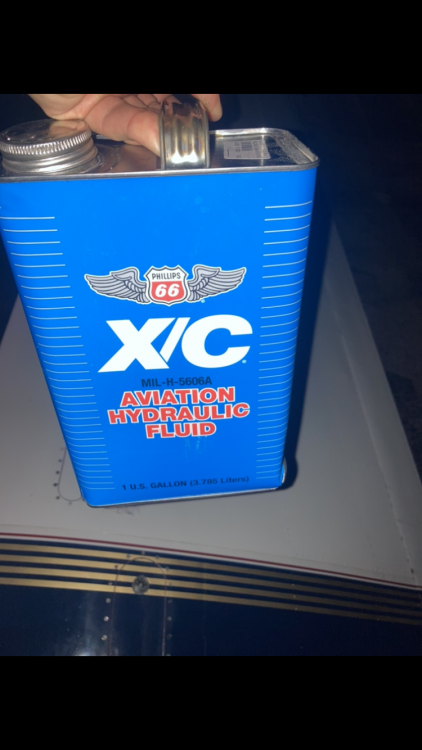

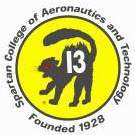

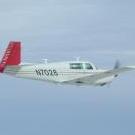
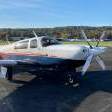



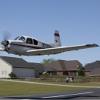
.thumb.png.7c67574d7b28f67b0b4a17760919b1ac.png)
